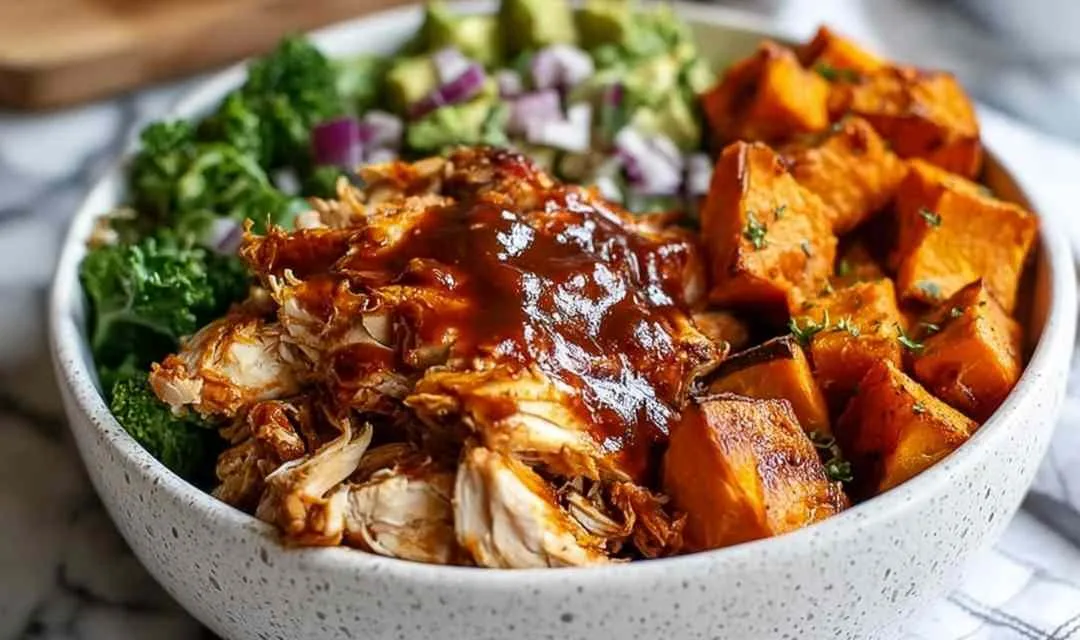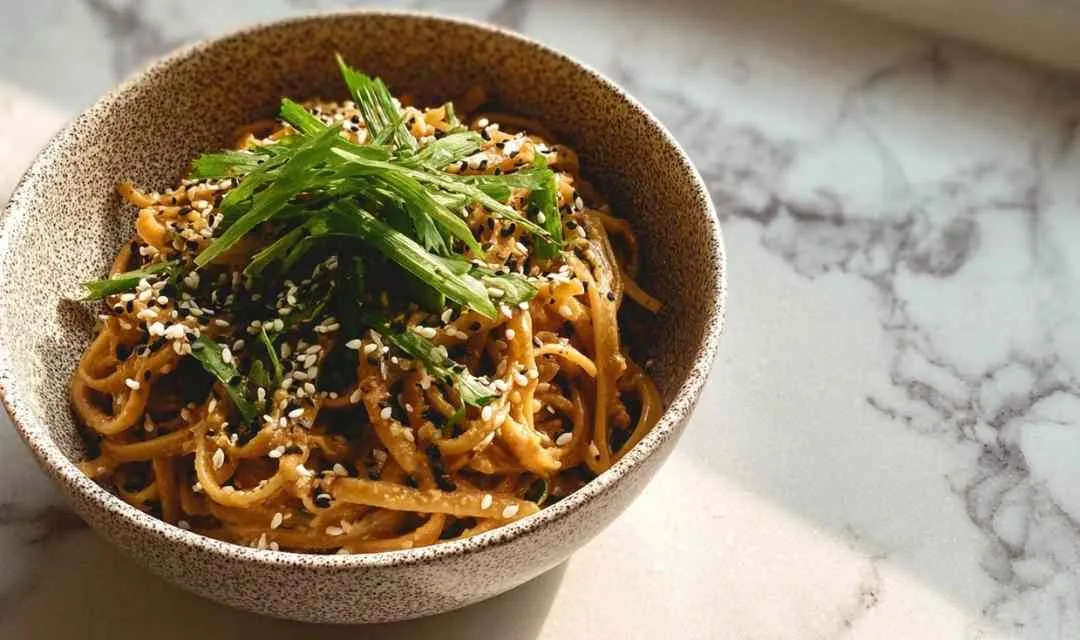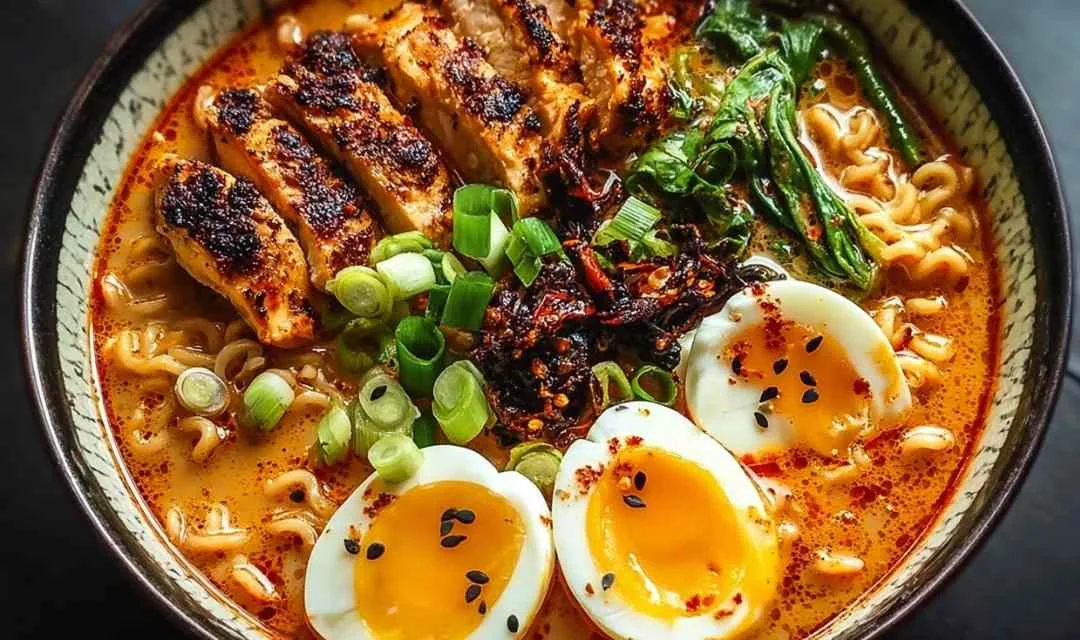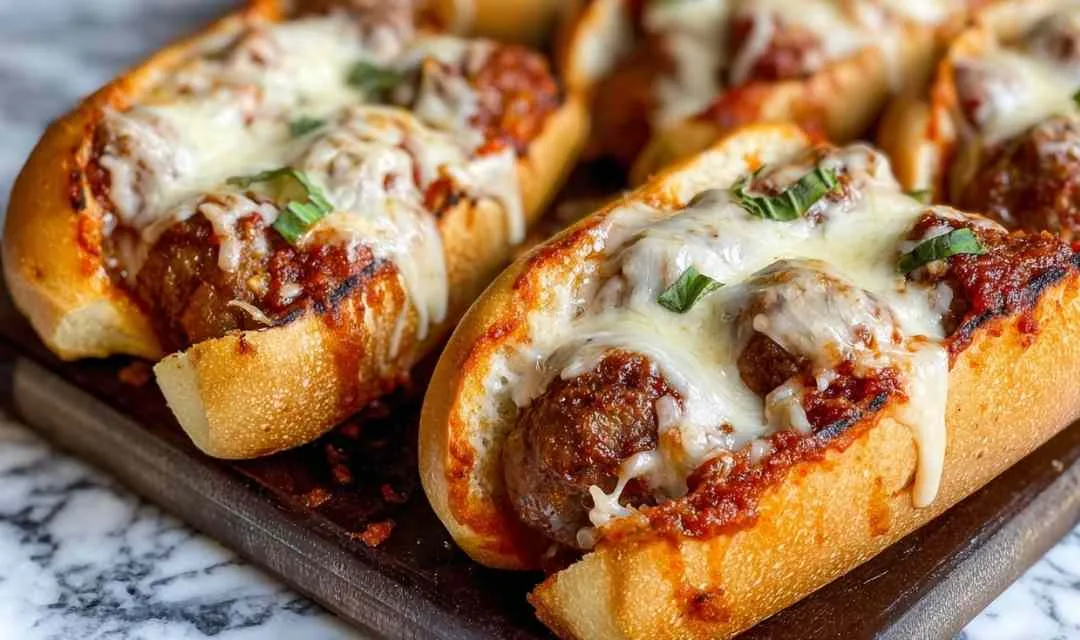High Protein Gordon Ramsay Ramen transforms the classic Japanese comfort bowl into a protein powerhouse that delivers 40+ grams of protein per serving without sacrificing any of that deep, soul-warming flavor. This restaurant-quality version uses chicken bone broth, generous protein portions, and perfectly jammy soft-boiled eggs to create a bowl that satisfies both your taste buds and your nutritional goals.
I remember the first winter after my kids moved out, when the house felt too quiet and I needed something comforting to fill both my kitchen and my evening. I’d been watching Gordon Ramsay’s cooking techniques and decided to try my hand at real ramen, not the instant packets I’d relied on for quick lunches. The steam rising from the pot, the smell of ginger and garlic sizzling in sesame oil, and that first taste of deeply savory broth reminded me why I fell in love with cooking in the first place. Now this high protein version has become my go-to when I need something that feels like a warm hug in a bowl. If you’re looking for more Asian-inspired comfort dishes, my easy gluten free vegan ramen recipe offers a lighter plant-based alternative. Time to get your chopsticks ready.
What Makes This High Protein Ramen So Special
This High Protein Gordon Ramsay Ramen recipe has become a weeknight staple in my kitchen because it combines gourmet restaurant techniques with practical home cooking wisdom. Gordon Ramsay’s approach to layering umami flavors transforms simple ingredients into something truly memorable, and I’ve adapted his method to maximize protein without compromising taste.
Here’s why this protein-packed ramen works every time:
- Delivers 40+ grams of protein per bowl using bone broth, generous protein portions, eggs, and edamame
- Ready in under an hour despite tasting like you’ve simmered it all day
- Uses accessible ingredients you can find at any grocery store
- Completely customizable for different proteins, spice levels, and dietary preferences
- Restaurant-quality umami depth from miso paste, bone broth, and carefully sautéed aromatics
- Meal prep friendly with components that store beautifully for quick assembly later
I’ve tested this recipe dozens of times with my family, adjusting the protein amounts and perfecting the broth depth. The combination of tender noodles, jammy soft-boiled eggs, and protein-rich broth hits every comfort food note while keeping you satisfied for hours.
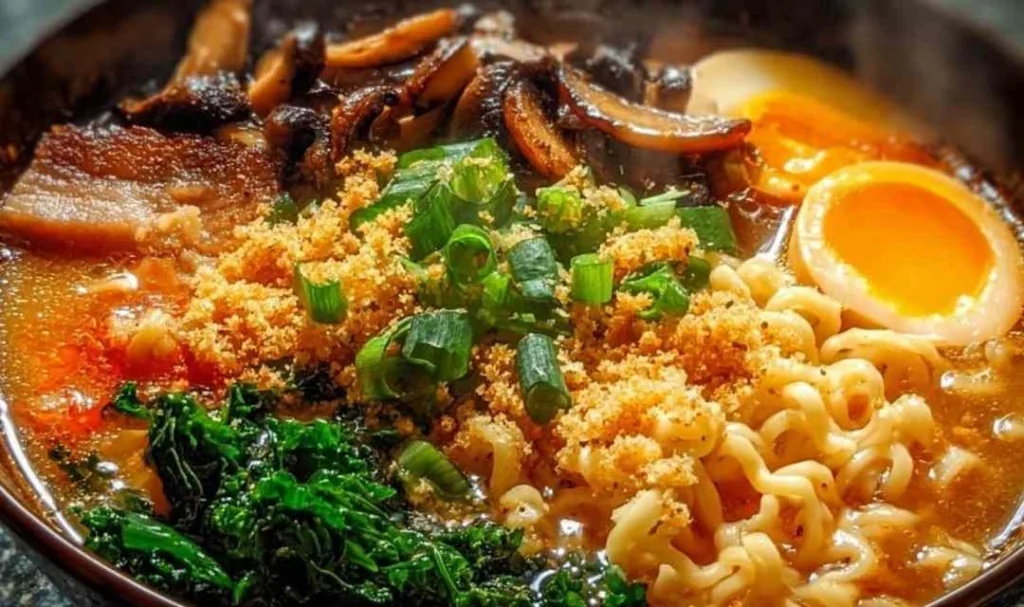
Ingredient Spotlight
Understanding what goes into your high protein ramen helps you appreciate how each component builds that incredible restaurant-quality flavor.
Chicken Bone Broth: This forms the protein-rich foundation of your ramen, adding extra collagen and depth that regular stock simply can’t match. I always choose bone broth over regular broth because it creates a fuller, more satisfying body in the final soup and contributes an extra 8-10 grams of protein per serving.
White Miso Paste: This fermented soybean paste brings that essential umami punch that makes ramen taste authentic and deeply savory. In my kitchen, I prefer white miso over red because it’s milder and doesn’t overpower the other flavors. For more ways to use miso paste, try my simple miso soup recipe which uses similar techniques.
Fresh Ginger and Garlic: These aromatics create the flavor base when sautéed in sesame oil, releasing their essential oils and perfuming your entire kitchen. I’ve learned that grating the ginger releases more flavor than chopping it, and letting both sizzle for exactly one minute without browning creates the perfect aromatic foundation.
Protein Options: Whether you choose chicken breast, pork belly, or tofu, using a full 12 ounces ensures each bowl gets at least 4-6 ounces of protein. Betty always recommends cooking the protein separately to maintain its texture and keep the broth crystal clear, a technique I learned the hard way after making cloudy broth too many times.
Soft-Boiled Eggs: These jammy-centered eggs add another 18-21 grams of protein while creating that iconic ramen experience. The key I discovered is exactly 6½ minutes of boiling time starting from boiling water, then an immediate ice bath to stop the cooking and create those perfectly runny golden yolks.
Sesame Oil: Just one teaspoon adds incredible nutty aroma and authentic Asian flavor to the broth base. I always add it at the beginning when sautéing aromatics to release its full fragrance throughout the kitchen.
Shiitake Mushrooms: These meaty mushrooms contribute additional umami and a satisfying bite that complements the protein without adding heaviness. I’ve found that sautéing them until golden brown brings out their best earthy flavor and creates a pleasant textural contrast.
Edamame: These young soybeans boost the protein count even further while adding a pop of color and pleasant texture. My family prefers when I add them in the last two minutes of cooking the noodles for perfect tenderness without becoming mushy.
Hemp Hearts: This optional topping adds omega-3s and an extra protein boost with a pleasant nutty flavor. Betty sprinkles these on top right before serving for maximum nutritional benefit and a subtle crunch.
How to Make High Protein Gordon Ramsay Ramen
This method builds layers of flavor step by step, ensuring restaurant-quality results every time you make it.
Step 1. Start by preparing your protein choice. Season chicken breast or pork with salt and pepper, then sear in a hot pan until golden and cooked through. I’ve learned that letting the meat develop a good crust before flipping creates better flavor, and chicken breast needs only 5-6 minutes per side for perfect doneness without drying out.
Step 2. Create your aromatic base by heating sesame oil in a saucepan over medium heat, then sauté minced garlic and grated ginger for one minute until fragrant. Betty’s tip: don’t let the garlic brown or it becomes bitter and ruins the delicate broth flavor.
Step 3. Build the broth by stirring in soy sauce, miso paste, mirin, and chili paste until well combined, then pour in the bone broth and bring to a boil. After years of making this, I’ve found that whisking the miso paste with a small amount of warm broth first prevents lumps and ensures smooth integration throughout the liquid.
Step 4. Add collagen powder if using, then reduce heat and simmer for 15-20 minutes to allow all the flavors to marry beautifully. The key I discovered is maintaining a gentle simmer rather than a rolling boil to preserve the miso’s beneficial properties and prevent bitterness.
Step 5. While the broth simmers, prepare your soft-boiled eggs by bringing water to a rolling boil, then gently lowering room-temperature eggs into the water and boiling for exactly 6½ minutes. Immediately transfer to ice water for at least 5 minutes to stop the cooking process and achieve that perfect jammy center.
Step 6. Cook your ramen noodles according to package directions in a separate pot, adding edamame in the last two minutes of the noodles’ cooking time. I always cook noodles separately to keep the broth clean and maintain better control over texture, and fresh noodles generally take 2-3 minutes while dried take 4-5 minutes.
Step 7. Sauté your mushrooms in a pan until golden brown, about five minutes, then briefly wilt the spinach or bok choy for one to two minutes. My family prefers when I cook these toppings just before serving so they stay vibrant, fresh, and maintain their textural integrity.
Step 8. Assemble your bowls by dividing noodles and edamame between two large bowls, ladling hot broth over top, then arranging generous portions of protein, egg halves, vegetables, and toppings. Betty always says presentation matters, so fan out your protein slices and arrange everything so each component is visible and inviting.
Keeping This High Protein Ramen Fresh
Proper storage ensures you can enjoy this protein-packed ramen throughout the week with minimal effort.
Refrigerator Storage: Store the broth, noodles, and protein in separate airtight containers for three to five days. I typically keep my components separated because noodles absorb liquid and become mushy when stored together with broth. The broth actually develops even more flavor after a day in the refrigerator as all those aromatics continue to meld and deepen. Soft-boiled eggs will keep for up to three days when properly refrigerated, either in their shells or peeled in a covered container with a damp paper towel.
Freezing Guidelines: The broth freezes beautifully for up to three months. I portion it into individual servings so I can thaw exactly what I need for one or two bowls. Betty’s freezing method works well because the bone broth base maintains its rich texture and deep flavor after thawing without separation. However, I never freeze the noodles or eggs as they become unpleasantly mushy and rubbery when thawed, losing all their appealing texture.
Reheating Methods: For the best texture, I reheat the broth on the stovetop over medium heat until steaming hot, cook fresh noodles or briefly warm stored ones in boiling water for 30 seconds, and warm the protein separately in a pan or microwave for 1-2 minutes. Betty always recommends assembling everything fresh right before serving because it only takes a few minutes and tastes infinitely better than reheating everything together in one bowl.
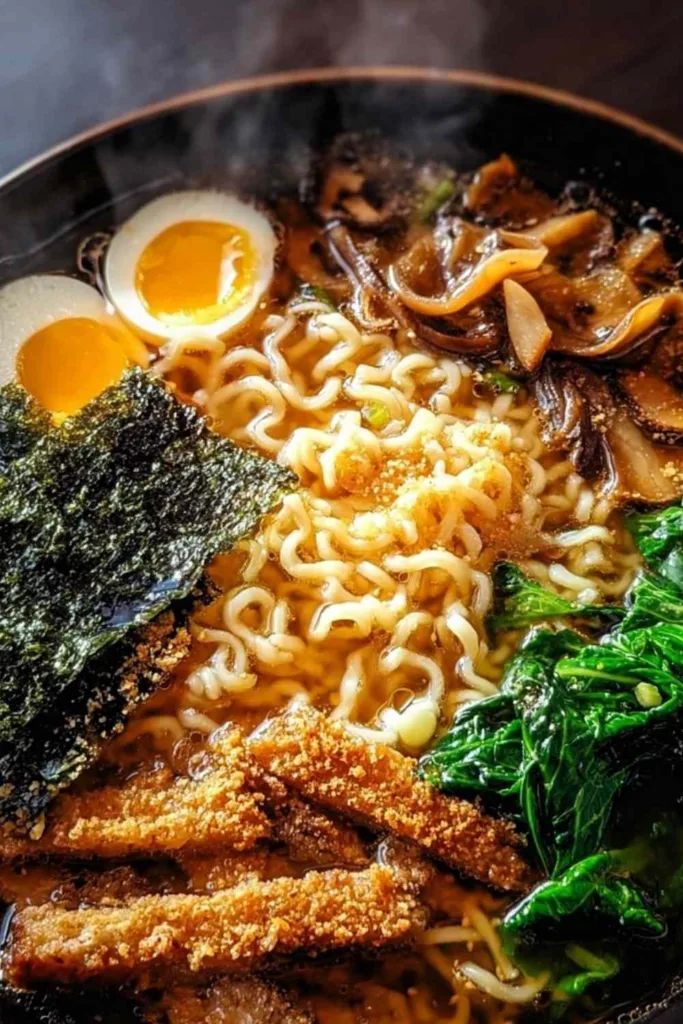
Perfect Partners for High Protein Ramen
Building a complete meal around this protein-rich ramen creates a satisfying Asian-inspired dinner experience.
Pork or Vegetable Gyoza: These pan-fried dumplings add textural contrast and make the meal feel like a complete restaurant experience. The crispy bottoms and tender tops complement the soft noodles beautifully, and the dipping sauce provides another layer of flavor.
Seaweed Salad: This refreshing, slightly sweet side provides a cool contrast to the hot, rich broth while adding beneficial minerals and fiber. I love serving this as a starter before the ramen to prepare your palate for the main event.
Spicy Edamame: Toss steamed edamame with chili oil, sea salt, and sesame seeds for an extra protein boost that doubles as an appetizer. My family always requests these on ramen night, and they’re ready in just five minutes.
Pickled Vegetables: Quick-pickled cucumbers, radishes, or carrots cut through the richness of the broth with bright acidity. Betty’s method is simple: just rice vinegar, sugar, and salt for 15 minutes creates the perfect tangy crunch.
Kimchi: This probiotic-rich fermented cabbage adds spicy, tangy complexity and beneficial gut bacteria to your meal. A small side bowl lets everyone customize their spice level by adding as much or as little as they prefer.
Asian Cucumber Salad: Crisp cucumbers dressed in rice vinegar, soy sauce, and sesame oil provide a refreshing palate cleanser between slurps of hot ramen. The cool, crunchy texture balances the warm, soft noodles perfectly.
If you’re looking for more high-protein soup options to add to your weekly rotation, try my high protein broccoli cheddar soup for creamy comfort or high protein taco soup for a Mexican-inspired twist.
FAQs
I recommend using vegetable stock instead of bone broth, substituting crispy tofu for the meat protein, and doubling the eggs to maintain the protein count around 35-40 grams per serving. Many home cooks find success adding chickpeas or white beans for additional plant-based protein.
Betty’s solution is adding an extra egg per serving, using collagen powder in the broth, sprinkling hemp hearts on top, and ensuring you use the full 12 ounces of protein divided between servings. You could also add a scoop of unflavored collagen powder which dissolves completely without affecting taste.
The best approach I’ve tested is bringing water to a rolling boil first, gently lowering room-temperature eggs into the water with a slotted spoon, setting a timer for exactly 6½ minutes, then immediately plunging them into ice water for at least 5 minutes. This stops the cooking process at precisely the right moment and makes peeling much easier.
To prevent disappointment, I suggest using fresh ramen noodles from the refrigerated section if available, as they have better texture and more authentic chew than dried packages. However, dried ramen works perfectly well when you cook them just until tender according to package directions, usually 4-5 minutes.
I recommend bone broth because it adds significant protein, usually 8-10 grams per cup, and creates a richer, more satisfying broth with better body than regular stock. If unavailable, use regular chicken stock and add a tablespoon of collagen powder to boost protein content.
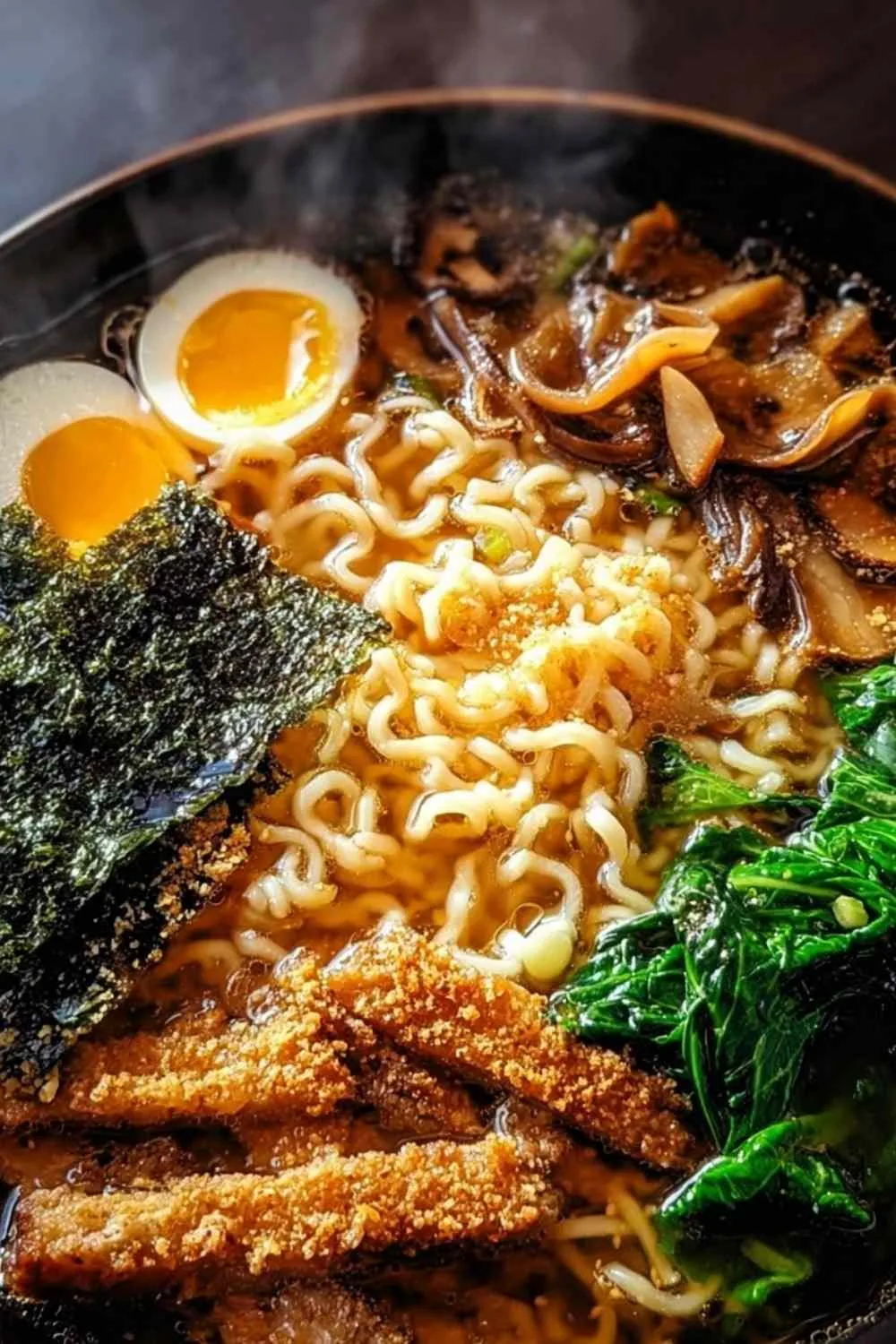
High Protein Gordon Ramsay Ramen
Ingredients
Equipment
Method
- Prepare the protein: If using raw chicken or pork, season with salt and pepper. In a pan, sear or cook until golden and cooked through. Chicken breast needs 5-6 minutes per side, pork needs 8-10 minutes. Once cooked, shred or slice and set aside. If using tofu, press for 15 minutes, cube, and pan-fry until crispy.
- Make the broth: In a saucepan, heat sesame oil over medium heat. Add garlic and ginger and sauté for 1 minute until fragrant but not browned. Whisk miso paste with 1/4 cup warm broth in a small bowl until smooth. Stir soy sauce, remaining miso mixture, mirin, and chili paste into the pan. Pour in the bone broth and bring to a boil.
- Add collagen powder if using, then reduce heat and simmer gently for 15-20 minutes to develop deep flavor. Maintain a gentle simmer rather than rolling boil to preserve miso properties.
- Prepare the eggs: Bring water to a rolling boil in a separate pot. Gently lower room-temperature eggs into boiling water using a slotted spoon. Boil for exactly 6 and a half minutes for jammy yolks. Transfer immediately to ice water for at least 5 minutes to stop cooking. Peel and slice in half just before serving.
- Cook the noodles: In a separate pot, cook ramen noodles according to package instructions. Fresh noodles take 2-3 minutes, dried take 4-5 minutes. In the last 2 minutes of noodle cooking time, add edamame if using. Drain and set aside.
- Sauté the toppings: In a pan, sauté mushrooms over medium-high heat until golden brown, about 5 minutes. Add spinach or bok choy and cook for 1-2 minutes until just wilted but still vibrant.
- Assemble the bowls: Divide cooked noodles and edamame between two large serving bowls. Ladle hot broth generously over the noodles. Top each bowl with 4-6 oz of protein, egg halves, sautéed mushrooms, greens, spring onion, sesame seeds, hemp hearts, and nori. Drizzle with chili oil if desired. Serve immediately while hot.



